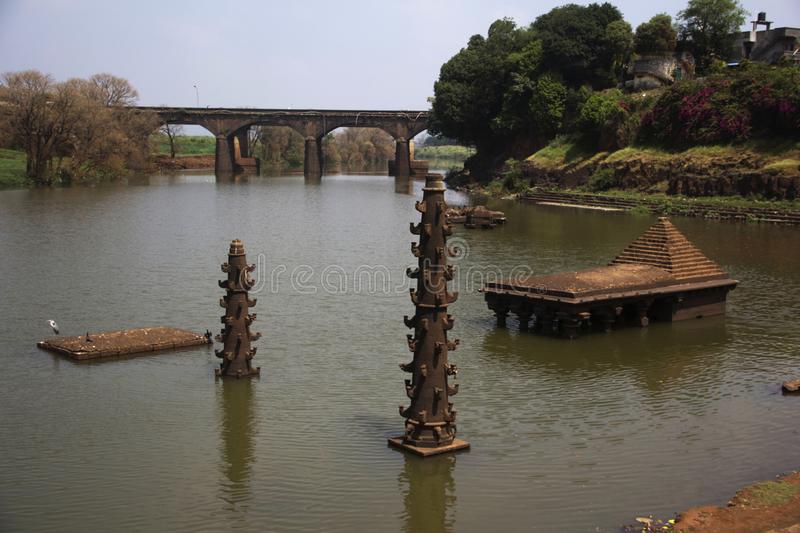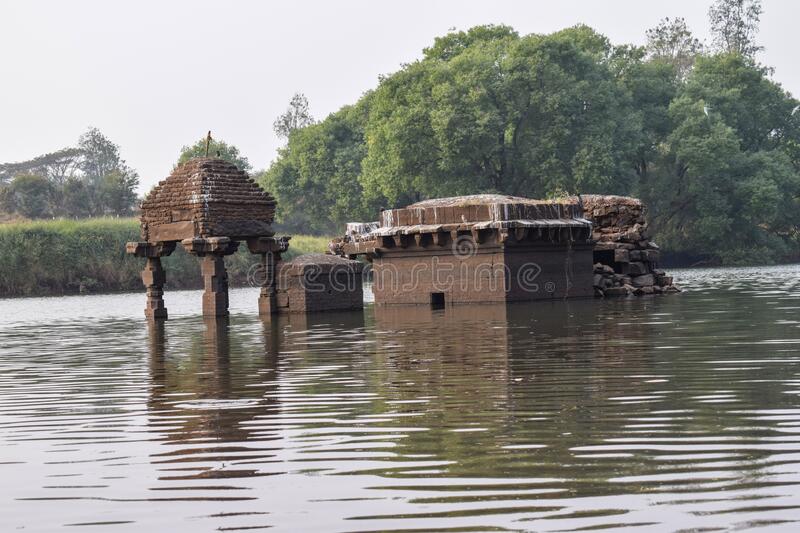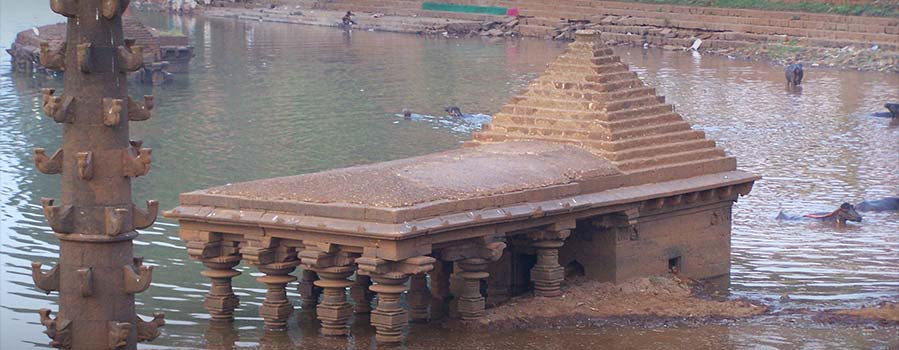The Panchganga River is one of the important rivers of India located in Maharashtra. In English, the name translates as "Five Rivers". It is a major tributary of Krishna River, with which it joins at Narsobawadi.
Origin:
The Panchganga River of Maharastra flows through the borders of Kolhapur. It starts from Prayag Sangam (Village: Padali BK., Taluka: Karvir, Dist:Kolhapur). The Panchganga is formed, as has been noted already, by four streams, the Kasari, the Kumbhi, the Tulsi and the Bhogawati. Local tradition believes in an underground stream Saraswati which together with the other four streams make the Panchganga.
The Prayag Sangam confluence marks the beginning of the Panchganga river proper which after receiving the waters of the four tributaries continues in a larger pattern with the flow of waters received from the rivers. From North of Kolhapur it has a wide alluvial plain. After developing this plain the river resumes its course eastwards.
From Kolhapur the Panchganga River, as the river is now called, winds east about thirty miles till it falls into the Krishna at Kurundvad. In the thirty miles of its course, to the east of Kolhapur the Panchganga River receives only one considerable stream the Hatkalangale or Kabnur which, rising from the Alta hills and passing Hatkalangale and Korochi joins the Panchganga near Kabnur about fifteen miles below Kolhapur.
From Shiroli to its junction with the Krishna near Narsobawadi, it has an extensive Alaviya floor bordered by the large worn out stumps of the Alta portion of the Panhala in the north and the Hupari part of the Phonda Sangaon range in the south. A characteristic feature of this basin is the contrast between the rounded worn out features locally known as Mals and the general entrenched nature of all the streams.
A further noteworthy aspect is the deeply incised course of the Panchganga itself. From Mangaon, the river flows in a deep bed that is well below 40 feet from the surrounding plain. Further downstream it develops an incised meander-core which includes the Narsobawadi area.


